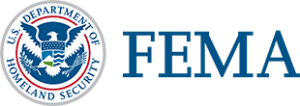
SACRAMENTO, Calif. – Residents recovering from the October 2017 fires in California have less than two weeks left to register with the Federal Emergency Management Agency (FEMA) for disaster assistance. The last day to register is Dec. 11, 2017.
Individuals and families who were living in Butte, Lake, Mendocino, Napa, Nevada, Orange, Sonoma and Yuba counties and suffered damage from the fires between Oct. 8 and Oct. 31, 2017, should register for FEMA assistance. They also may be eligible for low-interest, long-term disaster recovery loans administered by the U.S. Small Business Administration (SBA).
Owners of businesses and nonprofits located in the designated counties during the same disaster period also should register to receive applications for SBA business disaster recovery loans.
Disaster assistance may be able to fill insurance gaps or provide help to survivors who have been waiting more than 30 days on a homeowner’s claim. Assistance could cover such costs as short-term temporary housing, basic home repairs, disaster-related personal expenses, wells or septic systems damaged in the fires.
Residents can apply for disaster assistance by going online at DisasterAssistance.gov, by using the FEMA app on a smart phone or by calling 800-621-3362 or (TTY) 800-462-7585. Applicants who use 711 or Video Relay Service can call 800-621-3362. The toll-free numbers are open 7 a.m. to 10 p.m. seven days a week.
In-person registration assistance is available at the Local Assistance Center in Napa County or at one of the Disaster Recovery Centers (DRCs) in Mendocino, Napa or Sonoma counties. To find the closest DRC, go online at fema.gov/drc or text 43362 with the message DRC and the resident’s ZIP code. Standard message and data rates apply.
Applicants registering for disaster assistance should have the following information available:
• Social Security number.
• Address of the damaged primary residence.
• Description of the damage.
• Information about insurance coverage.
• A current contact telephone number.
• An address where they can receive mail.
• Bank account and routing numbers for direct deposit of funds.
